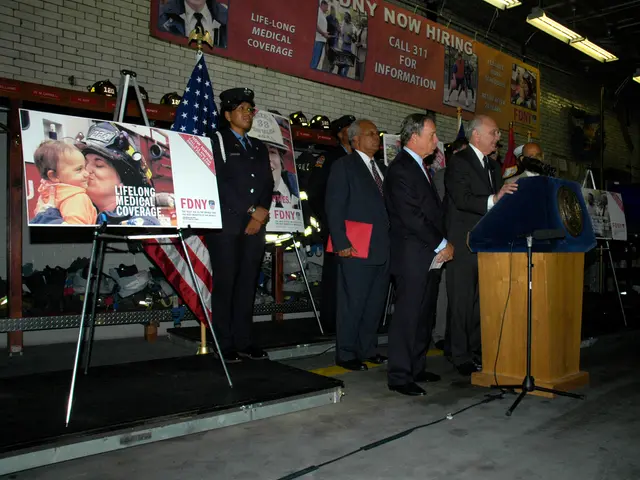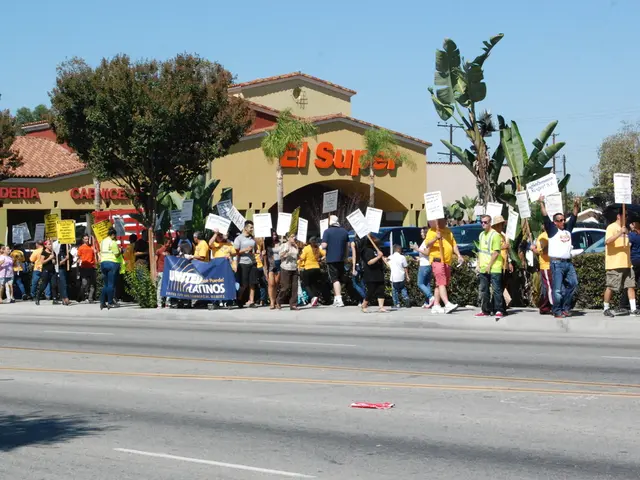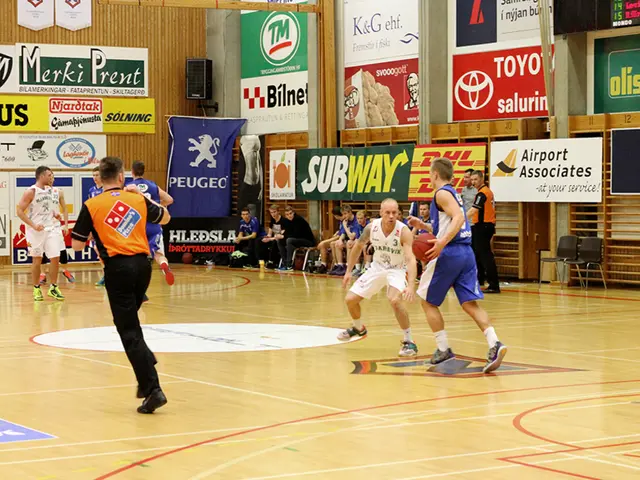US-China Discussion on Economic and Trade Matters Held in Stockholm
U.S.-China Economic and Trade Meeting in Stockholm Extends Tariff Truce
The U.S.-China Economic and Trade Meeting held in Stockholm on July 28-29, 2025, resulted in an agreement to extend the existing tariff truce for an additional 90 days. The meeting, which was the third in a series of talks following meetings in London and Geneva, was held under the Geneva Joint Statement framework [1][2].
The U.S. was represented by Scott Bessent, the Secretary of the Treasury, and Jamieson Greer, the United States Trade Representative, while China was led by Vice Premier He Lifeng [1]. The discussions were described as "in-depth, candid, and constructive," with both sides seeking to avoid a tariff escalation during a critical shipping period [2].
The main outcome of the Stockholm meeting was the extension of a tariff truce. The United States agreed to continue suspending 24 percentage points of its additional tariff rate on Chinese goods (including Hong Kong and Macau) for 90 more days, retaining a remaining 10% tariff rate per Executive Order 14257 [3]. China, in response, agreed to correspondingly maintain its commitments under the Geneva Joint Statement framework [3].
The talks addressed major issues such as tariffs, semiconductor access, investment restrictions, and supply chain security [1][2][4][5]. However, no final comprehensive trade deal was reached at the meeting itself [2]. Instead, the talks were largely preparatory and cautious, setting the stage for further talks rather than concluding major agreements [1][2][4][5].
China also agreed to suspend 24 percentage points of the additional ad valorem rate of duty on articles from the United States for an additional 90 days, starting on August 12, 2025, while retaining a remaining additional ad valorem rate of 10 percent [3]. Furthermore, China will adopt or maintain all necessary administrative measures to suspend or remove non-tariff countermeasures taken against the United States as agreed in the Geneva Joint Statement [3].
The meeting in Stockholm was the third in a series of talks aimed at resolving the ongoing trade dispute between the U.S. and China. The Geneva Joint Statement served as a basis for these meetings [2]. The Joint Statement was recalled by both the United States and China, and the discussions in Stockholm were based on the agreements made in the Geneva Joint Statement [2].
In summary, the Stockholm meeting's main outcome was the extension of a tariff truce and a foundation for ongoing, high-level U.S.-China trade negotiations without immediate resolution on core issues [2][3]. Both sides expressed optimism for continued dialogue but approached the discussions with caution to avoid rash commitments [2][5]. The next round of talks is expected to take place in the near future.
References:
- Bloomberg
- Reuters
- White House Press Release
- CNN Business
- Financial Times
Read also:
- Critique on Gender Issues: Deniz Yücel draws a parallel between Minister of Culture and former East Germany's chief ideologist Kurt Hager
- Chinese Ambassador issues stern message to India regarding Trump's tariffs in midst of escalating trade feuds
- Aircraft collides with another one on the runway during landing at Montana airport, igniting flames
- Trump Not Anticipating Agreement with Putin








